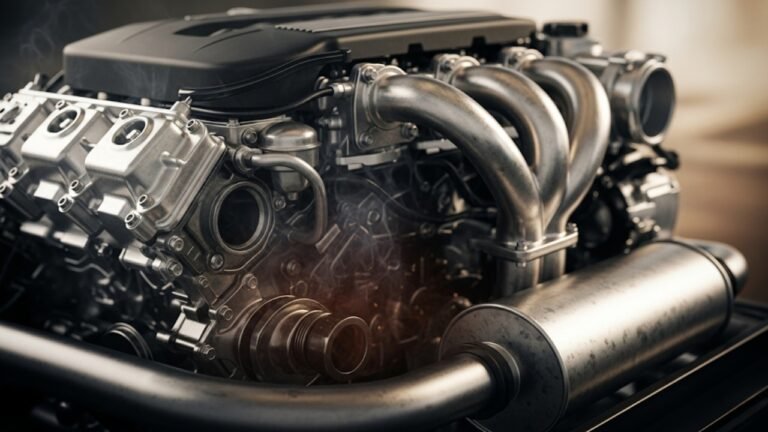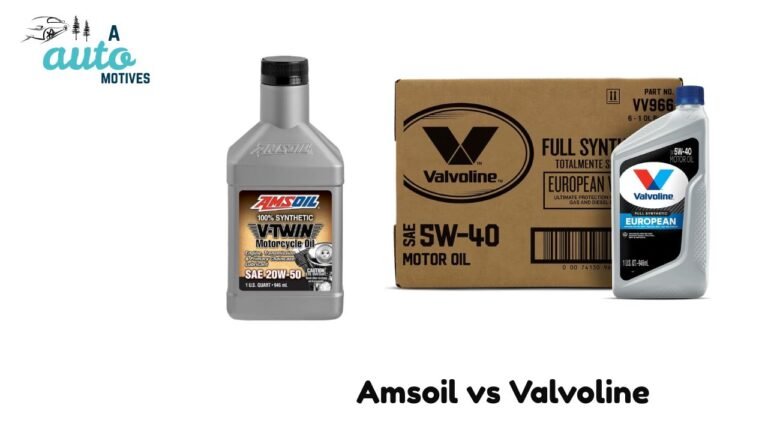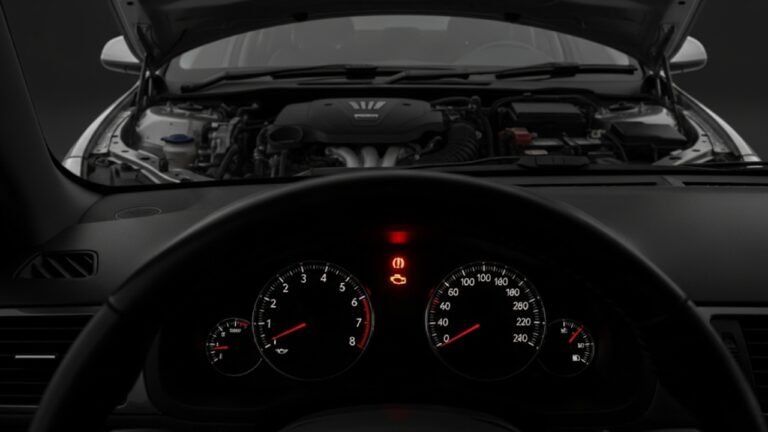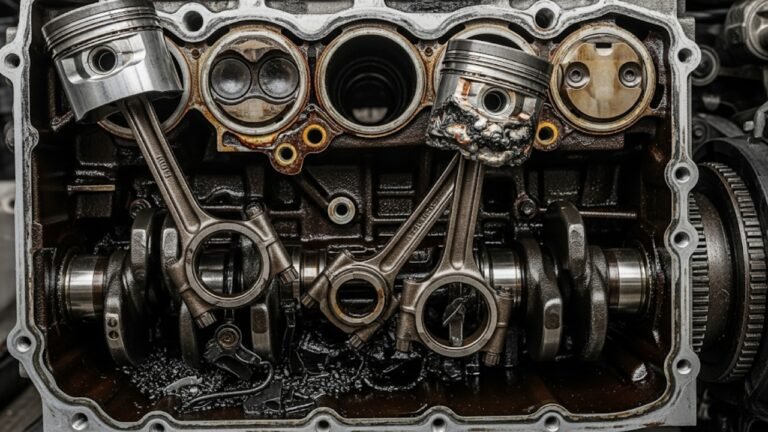What Will Too Much Oil in a Car Do?
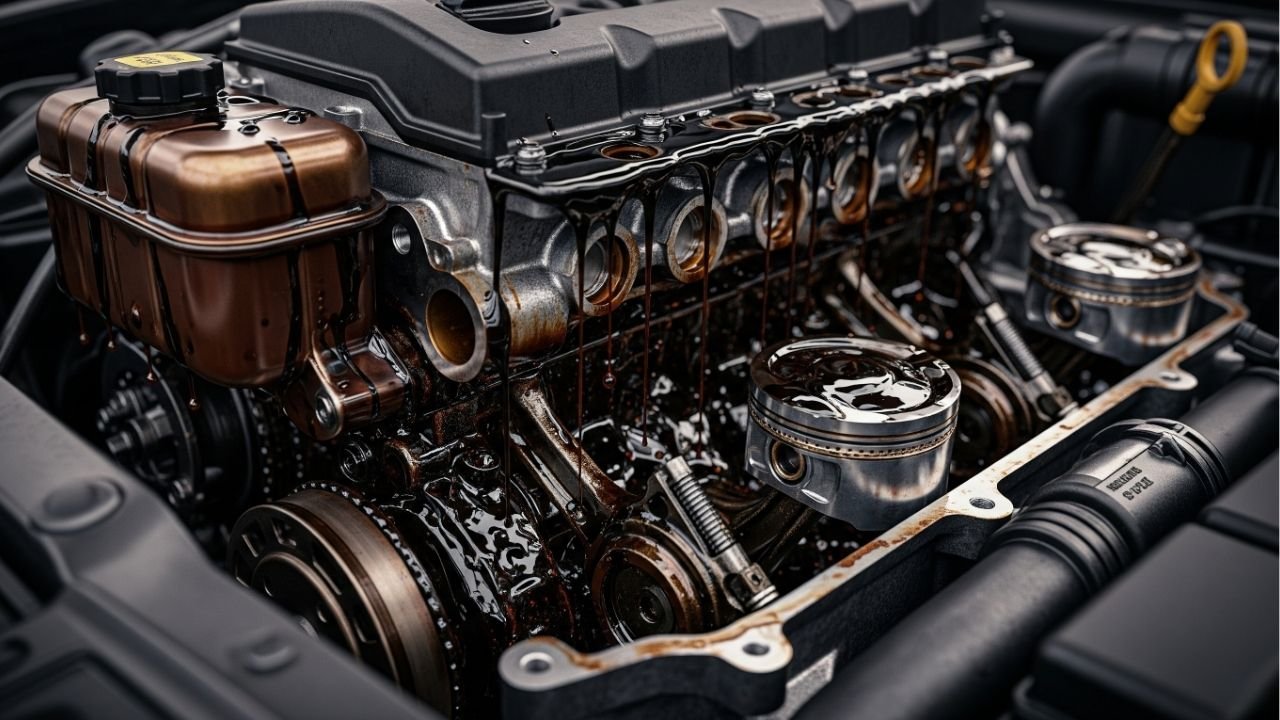
Let’s be honest. Most of us aren’t professional mechanics. We’re just regular folks trying to take care of our cars the best we can. Maybe you checked your oil dipstick, saw it was low, and thought, “A little extra can’t hurt.” Been there, done that.
But here’s the real kicker—too much oil in a car can be just as harmful as not enough. It’s like overwatering a plant. You think you’re doing a good thing, but instead, you’re slowly choking it. The same goes for your car’s engine.
In this guide, I’m going to break down exactly what will too much oil in a car do, not with jargon or fear-mongering, but with the kind of advice I’d give a friend over coffee. I’ll share personal stories, technical facts (in simple words), and everything in between.
Let’s take this ride together.
In This Article
- 1 Why Does the Right Oil Level Even Matter?
- 2 How Does Too Much Oil Even Happen?
- 3 The Symptoms of Overfilled Oil: Your Car Will Speak Up
- 4 What Will Too Much Oil in a Car Do? A Deeper Dive Into the Damage
- 5 The Engine’s Worst Enemy: Oil Foaming
- 6 Overpressure: Silent Killer of Gaskets and Seals
- 7 Catalytic Converter Damage: The Unseen Expense
- 8 Performance Goes Downhill Fast
- 9 When It Becomes a Fire Hazard
- 10 How to Tell If You’ve Overfilled the Oil
- 11 What to Do Immediately If You Added Too Much Oil
- 12 How to Avoid Overfilling in the First Place
- 13 Real Talk: My Costly Mistake with Overfilling
- 14 Let’s Recap: Why Overfilling Oil Is a Risk Not Worth Taking
- 15 Frequently Asked Questions
- 15.1 1. Can a little too much oil hurt my car?
- 15.2 2. Will overfilled oil burn off on its own?
- 15.3 3. How much oil is too much?
- 15.4 4. Can I drive short distances with too much oil?
- 15.5 5. Can overfilling damage the oil filter?
- 15.6 6. How long does it take for damage to occur?
- 15.7 7. What’s the safest way to fix it at home?
- 15.8 8. Is it better to underfill than overfill?
- 16 Final Thoughts: Oil Is Life—But Not Too Much
Why Does the Right Oil Level Even Matter?
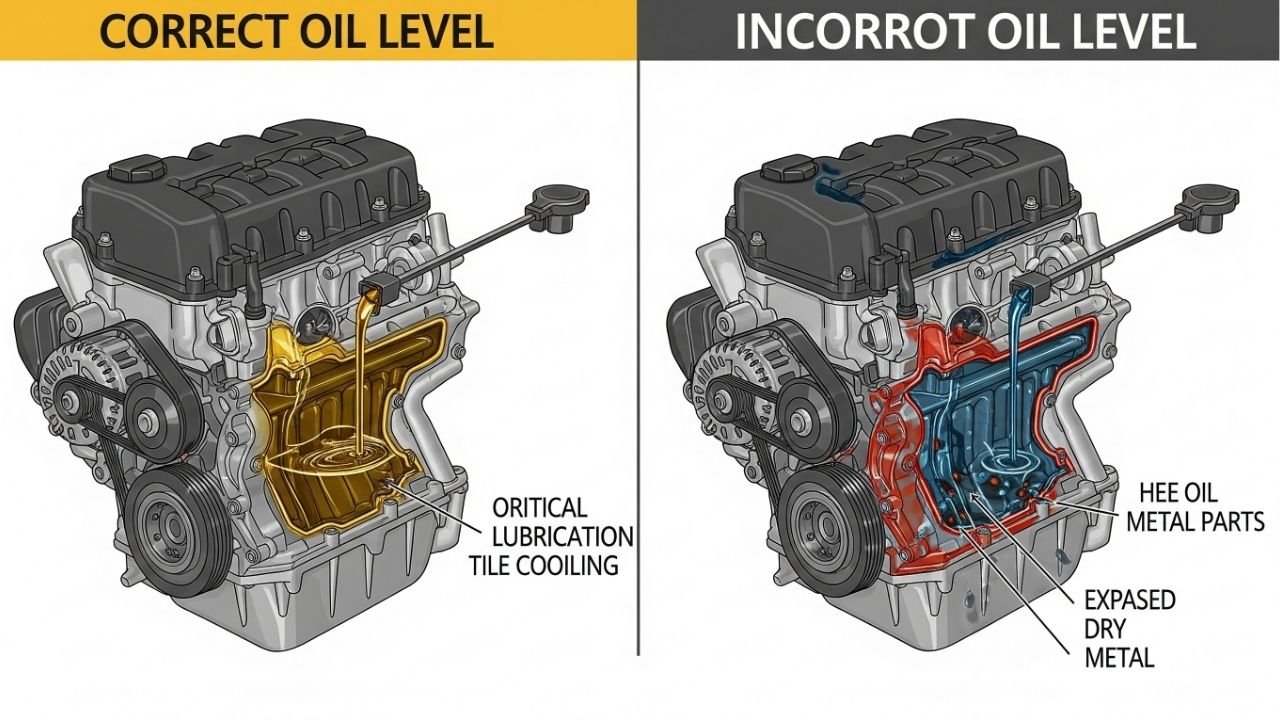
Oil’s main job is to:
-
Lubricate moving parts
-
Keep the engine cool
-
Prevent rust and corrosion
-
Clean out dirt and debris
-
Improve fuel efficiency
When there’s too much oil in a car, it messes with that balance. Suddenly, your engine’s carefully designed system is overwhelmed. Picture trying to walk through knee-deep mud—everything slows down, struggles, and starts wearing out fast.
So yes, oil is vital. But the right amount of oil is the real magic.
How Does Too Much Oil Even Happen?
It’s easier than you think. Trust me—I’ve done it.
Maybe you’re in a rush and forget you already topped it off. Or maybe the dipstick was hard to read. Some folks even think adding more oil will fix an engine that’s making noise. (Spoiler: It won’t.)
Here are common ways people overfill their oil:
-
Not checking the dipstick properly
-
Pouring in new oil without draining old oil fully
-
Relying too much on guesswork
-
Trying to “quiet down” an engine by topping off excessively
-
Using the wrong oil type or viscosity
What will too much oil in a car do in this case? It starts messing with your engine in sneaky, damaging ways—ones you might not notice until it’s too late.
The Symptoms of Overfilled Oil: Your Car Will Speak Up
Your car actually tries to tell you when something’s wrong. But it doesn’t use words. It uses sounds, smells, leaks, and lights. Let’s break it down.
Signs you’ve overfilled your oil:
-
Blue smoke from the exhaust
-
Burning oil smell inside or around your car
-
Oil leaks under the vehicle
-
Poor acceleration or rough idling
-
Check engine light or oil pressure light comes on
-
Whining or ticking sounds from the engine
I remember once smelling burnt oil while driving my uncle’s old Toyota. We had just changed the oil. Turns out, we added way too much. The dipstick was wet way above the “Full” line, and oil was leaking onto the hot exhaust. Lesson learned.
So, if your car is giving you these signals, don’t ignore them.
What Will Too Much Oil in a Car Do? A Deeper Dive Into the Damage
Let’s get real. Adding too much oil doesn’t just cause mild problems. It can cause serious, engine-killing damage.
Here’s a breakdown of how it all falls apart:
| Problem | What Happens |
|---|---|
| Oil foaming | Oil gets whipped into a frothy mess and loses its ability to lubricate properly |
| Increased pressure | Seals and gaskets burst from the extra internal pressure |
| Catalytic converter damage | Burning oil fouls the converter and reduces its life span |
| Misfiring and knocking | Oil reaches spark plugs, causing misfires and poor combustion |
| Engine wear | Internal parts grind against each other due to poor lubrication |
This isn’t just theory—it’s real. What will too much oil in a car do? It slowly destroys your engine from the inside out.
Imagine trying to run in shoes filled with syrup. Slippery, sticky, heavy—and eventually, your legs give out. That’s your engine with too much oil.
The Engine’s Worst Enemy: Oil Foaming
This one deserves a spotlight.
When you overfill your oil, the crankshaft (which spins rapidly) churns it into foam. This is called “aeration.” And it’s as bad as it sounds.
Here’s what happens:
-
Air bubbles break up the oil’s smooth texture
-
Foamy oil can’t coat metal surfaces well
-
Bearings and pistons don’t get enough protection
-
Heat builds up because of friction
-
The engine starts wearing out faster than you can say “tow truck”
What will too much oil in a car do? If foaming kicks in, you’re driving on borrowed time.
Overpressure: Silent Killer of Gaskets and Seals
Engines are sealed with rubber gaskets and o-rings that aren’t made to handle high internal pressure. Extra oil raises that pressure dangerously.
What happens next?
-
Gaskets blow out
-
Seals break
-
Oil starts leaking
-
You lose pressure in critical parts
-
The engine becomes a ticking time bomb
Once those seals give out, it’s like trying to hold water in a cracked bottle. You can patch it, sure, but the problem will keep coming back—until you fix the root cause.
Catalytic Converter Damage: The Unseen Expense
Most folks don’t think about this one until their mechanic gives them the bill. A damaged catalytic converter can cost hundreds or even thousands of dollars to replace.
Too much oil causes burning, and that burnt oil flows into your exhaust system. It reaches the catalytic converter, clogs it, and ruins its chemical balance.
If you’ve noticed:
-
Rotten egg smell
-
Poor fuel economy
-
Engine sputtering at higher speeds
…your converter might be in trouble.
So again, what will too much oil in a car do? It might quietly destroy one of the most expensive parts of your emissions system.
Performance Goes Downhill Fast
You might notice your car feeling sluggish. Maybe it takes longer to respond when you press the gas. Maybe it shudders at stoplights.
That’s because:
-
Oil-soaked spark plugs aren’t firing right
-
Dirty oil from frothing can’t cool the engine properly
-
Internal friction is rising
-
Your fuel-to-power conversion is breaking down
Even something as small as a 1/2 quart overfill can cause these symptoms in sensitive engines. The damage creeps in slowly, but it adds up fast.
When It Becomes a Fire Hazard
Yes, you read that right. Fire.
Overfilled oil can leak onto the hot exhaust manifold. If that oil ignites—and it has happened—your car could literally catch fire while you’re driving.
Sounds extreme, but cars have burned for less. And all it takes is one leak in the wrong place.
Don’t take that risk.
How to Tell If You’ve Overfilled the Oil
Okay, so you’ve topped off your oil and now you’re second-guessing yourself. Maybe you saw a puff of smoke. Or maybe something just feels off. Don’t panic.
Here’s how to check:
Use the Dipstick Like a Pro:
-
Park the car on a flat surface.
-
Turn off the engine and wait 5–10 minutes.
-
Pull out the oil dipstick and wipe it clean.
-
Reinsert it fully, then pull it out again.
-
Check where the oil level is between the “Low” and “Full” lines.
If the oil is above the maximum mark—even slightly—you’ve likely added too much.
What will too much oil in a car do? As we’ve seen, it starts creating problems the moment it gets beyond that line.
If you catch it early, though, you can fix it before any serious damage happens.
What to Do Immediately If You Added Too Much Oil
Let’s say you just changed your oil or topped it off—and realized you went overboard. Don’t wait for your engine to start crying out. Take action right away.
Here’s a step-by-step fix:
How to Remove Excess Oil:
Option 1: Use a manual pump extractor (easiest way)
-
Insert the thin hose into the dipstick tube
-
Pump the handle to suck oil into the container
-
Check the level, repeat if needed
Option 2: Loosen the oil drain bolt (messy but effective)
-
Place a drain pan under your car
-
Slowly unscrew the oil drain plug
-
Let a small amount drain, then quickly retighten
-
Recheck the level
Option 3: Visit a mechanic
If you’re unsure or uncomfortable, don’t risk it. A mechanic can correct the oil level in minutes.
What will too much oil in a car do? Plenty—but only if you ignore it. Fix it fast, and your engine will thank you.
How to Avoid Overfilling in the First Place
Let’s make sure you never end up in this spot again. Here’s what works for me—and it’s saved my engine more than once.
Pro Tips to Prevent Overfilling:
-
Know your engine’s oil capacity (check your manual)
-
Use a funnel when pouring oil—spill-free is key
-
Add oil slowly and check the dipstick often
-
Don’t guess—always measure
-
Change oil with care—drain completely before refilling
-
Mark your bottle—so you know exactly how much went in
Remember, when it comes to oil, more is not better. It’s all about the sweet spot.
Real Talk: My Costly Mistake with Overfilling
Let me tell you a quick story that still haunts me.
A few years back, I tried to impress my dad by changing the oil in his Honda. I didn’t read the manual. Just poured in oil until it “looked right.”
Bad idea.
The car started jerking on the highway. White smoke poured out the back like a haunted movie scene. We pulled over, popped the hood, and oil was everywhere. The gasket had blown.
That one mistake cost me over $600 in repairs.
So when someone asks me, “What will too much oil in a car do?”—I don’t answer with theory. I answer with lived experience.
Let’s Recap: Why Overfilling Oil Is a Risk Not Worth Taking
Here’s a quick recap of everything we’ve talked about:
What Will Too Much Oil in a Car Do?
-
Cause oil foaming, reducing lubrication
-
Increase internal pressure—blowing seals and gaskets
-
Damage the catalytic converter
-
Ruin spark plugs, causing misfires
-
Lead to engine overheating
-
Reduce acceleration and increase fuel usage
-
Create a fire hazard if oil hits hot parts
-
Cause long-term engine failure
Frequently Asked Questions
1. Can a little too much oil hurt my car?
Yes, even a small overfill can cause foaming or pressure buildup over time. Always aim for the correct range on the dipstick.
2. Will overfilled oil burn off on its own?
Not really. Burning oil is a sign of damage. It won’t “balance out” naturally—instead, it may damage internal components.
3. How much oil is too much?
Anything beyond the “Full” line on the dipstick is too much. Even 1/4 quart over can be harmful in smaller engines.
4. Can I drive short distances with too much oil?
You can, but it’s not recommended. Even short drives can cause long-term wear if oil pressure is too high.
5. Can overfilling damage the oil filter?
Yes. Too much pressure can cause the filter to clog or even rupture in rare cases.
6. How long does it take for damage to occur?
It depends on how much you overfilled. Minor overfills may take weeks to show effects. Severe ones? Just minutes.
7. What’s the safest way to fix it at home?
Using an oil extractor pump via the dipstick tube is the safest, least messy method for beginners.
8. Is it better to underfill than overfill?
Slightly underfilling is safer than overfilling. But the best practice is always staying within the recommended range.
Final Thoughts: Oil Is Life—But Not Too Much
Here’s the bottom line. Oil is your car’s lifeblood. But just like with real blood, you don’t want too much—or too little.
What will too much oil in a car do?
It will slowly turn your trusted ride into a ticking time bomb—affecting everything from performance to safety.
So the next time you reach for that oil bottle, take a deep breath. Go slow. Measure twice. Pour once. And if in doubt, check the dipstick before and after.
Your engine—and your wallet—will thank you.

